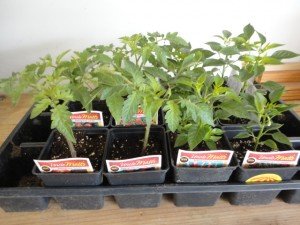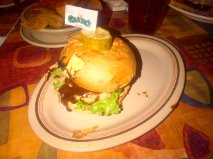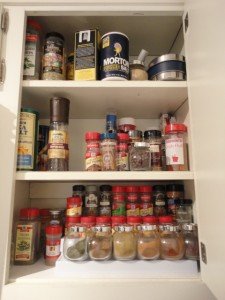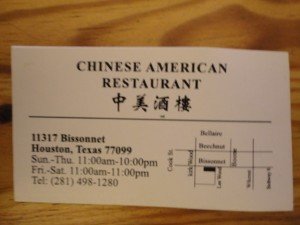 I wonder at times if all the potential combinations of ingredients have been tried at one time or another and then in turn available for viewing on the internet?
I wonder at times if all the potential combinations of ingredients have been tried at one time or another and then in turn available for viewing on the internet?
Likewise, how many possible combinations of pasta sauces are there using traditional Mediterranean ingredients?
A few years ago when rummaging through the pantry and refrigerator, I thought I was creating a sauce that I basically considered to be everything but the kitchen sink. I used diced tomatoes, whole garlic, canned black olives, canned sliced mushrooms, an onion and chili paste. 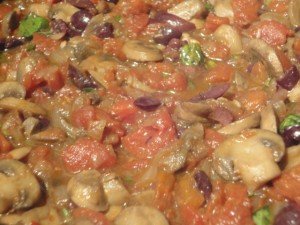 The result was a sauce that was salty, spicy, slightly acidic and fresh.
The result was a sauce that was salty, spicy, slightly acidic and fresh.  What I did not know at the time was this “creation” was nothing more then a variant of a classic pasta dish that has been served for decades. Over the years I have refined the sauce, adding fresh ingredients in lieu of canned.
What I did not know at the time was this “creation” was nothing more then a variant of a classic pasta dish that has been served for decades. Over the years I have refined the sauce, adding fresh ingredients in lieu of canned.
This morning when I was thinking about the title for this post, I had a recollection that the meal that I ate last night was very similar to Pasta alla Puttanesca that a friend made for a party at my house a few weeks ago. A quick search on the internet confirmed my suspicion that my creation was not a earth shattering new addition to the venerable list of pasta sauces that exist on the internet. I can live with the humbling experience, but to my defense it is a good sauce.
Pasta alla Puttanesca has numerous variants dependent upon the region and specific requirements of the cook. Literally the translation is “whores style pasta” which I find humorous. Despite the regional variants of the sauce, the underlying flavors are spicy, tangy, salty and fragrant. The first references to this sauce are found in Italy in the mid 20th century and the ingredients are typical of southern Italian cuisine.
One variation of the sauce includes anchovies and another version uses capers. I enjoy using both ingredients, but personally I will include anchovies the next time I prepare the sauce, but they are not required. The use of brine cured black olives provide the saltiness for which the sauce is known. The preparation for the sauce requires less then an hour which makes it easy to make and by my definition a fresh sauce versus one that has been simmering for hours.
Ingredients:
- Olive Oil
- 1 Diced Yellow / White Onion
- 5 Peeled Garlic Cloves
- 1 TSP of Sea Salt (any salt will be fine)
- 2 TSP of Sambal Oleak (Diced red hot chile or hot red pepper flakes are also useable)
- 8 – 16 Ounce Package of Fresh Sliced Mushrooms
- 1/2 Cup of Red Wine
- 28 Ounce Can of Diced Tomatoes
- 15 – 25 (1/2 – 3/4 Cups – tightly packed) Sliced Black Olives (Cured in brine, can be found at the olive bar in grocery stores. If not brine cured olives in a jar are just as good. California style black olives are too mild unless that is what you are seeking.)
- 10-15 Sliced / Torn Fresh Basil Leaves
- 1 LBS of Pasta (Personally a pasta such a Rotini, Rigatoni or Penne, but any pasta will be good)
- Grated Parmesan / Romano Cheese (optional for the sauce is typically salty enough)
Instructions:
- In a deep sauce pan drizzle Olive Oil and heat the pan on Medium High.
- Add the Salt and Garlic Cloves.
- When the Garlic Cloves are lightly browned, add the Onion. Saute the Onion and Garlic for 5 minutes.
- Add the Sambal / Hot Pepper and thoroughly mix all of the ingredients.
- Add the Mushrooms, mixing well. At this point you can either lower the heat to Low and stir occasionally, or turn off the stove, cover the sauce pan and walk away for 10 or more minutes.
- Raise the heat to Medium High and add the Red Wine and Tomatoes. Once the sauce is boiling, reduce the heat to Low and stir occasionally. The key is to reduce the sauce so most of the excess liquid has been evaporated.
- Bring the water for the Pasta to a boil and add your preferred Pasta. Cook the Pasta el dente.
- When you have added the Pasta to the boiling water, turn off the heat on the sauce and add the Olives and Basil, mixing all of the ingredients. There is a belief that if you cook olives and fresh basil too long that they become bitter and lose their fragrance and aroma.
- Once the pasta is cooked el dente, drain off the water and add the pasta to the sauce, thoroughly combining all of the ingredients.
- Serve and add grated cheese if desired.

